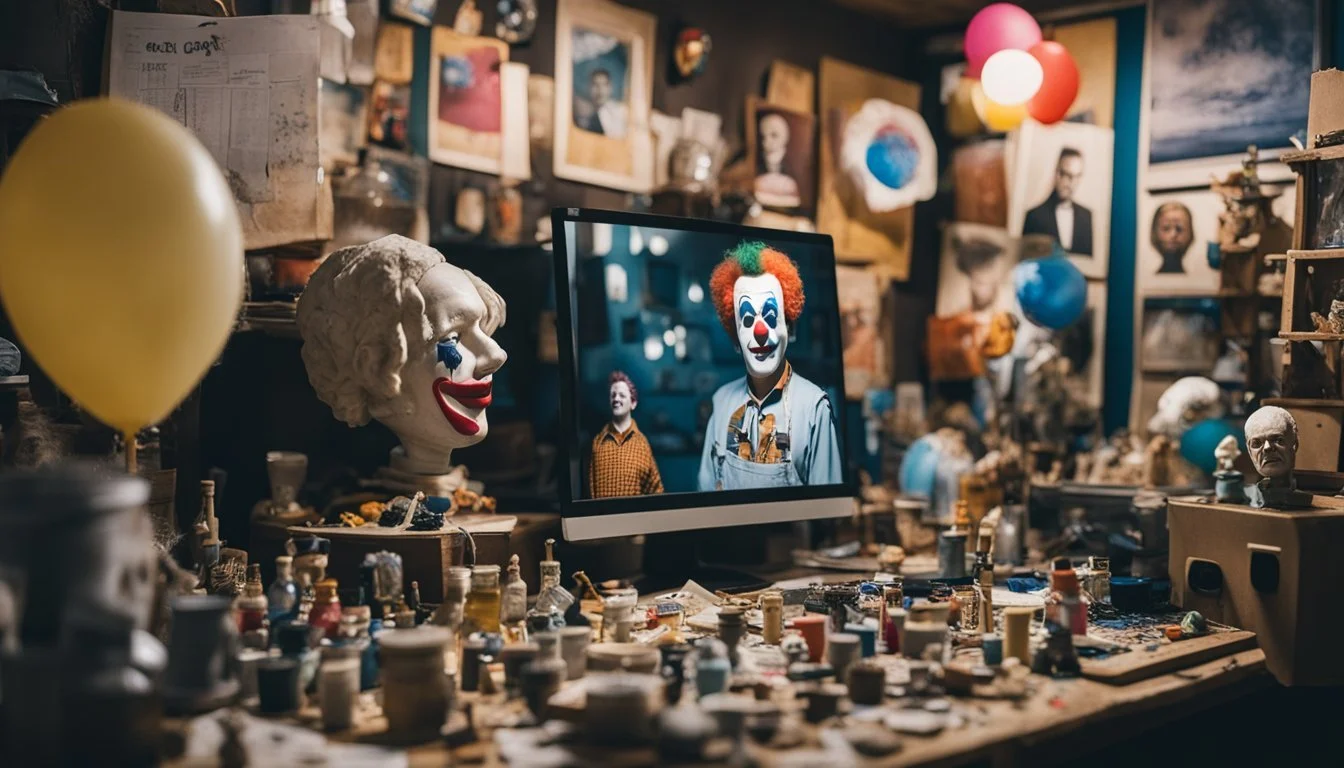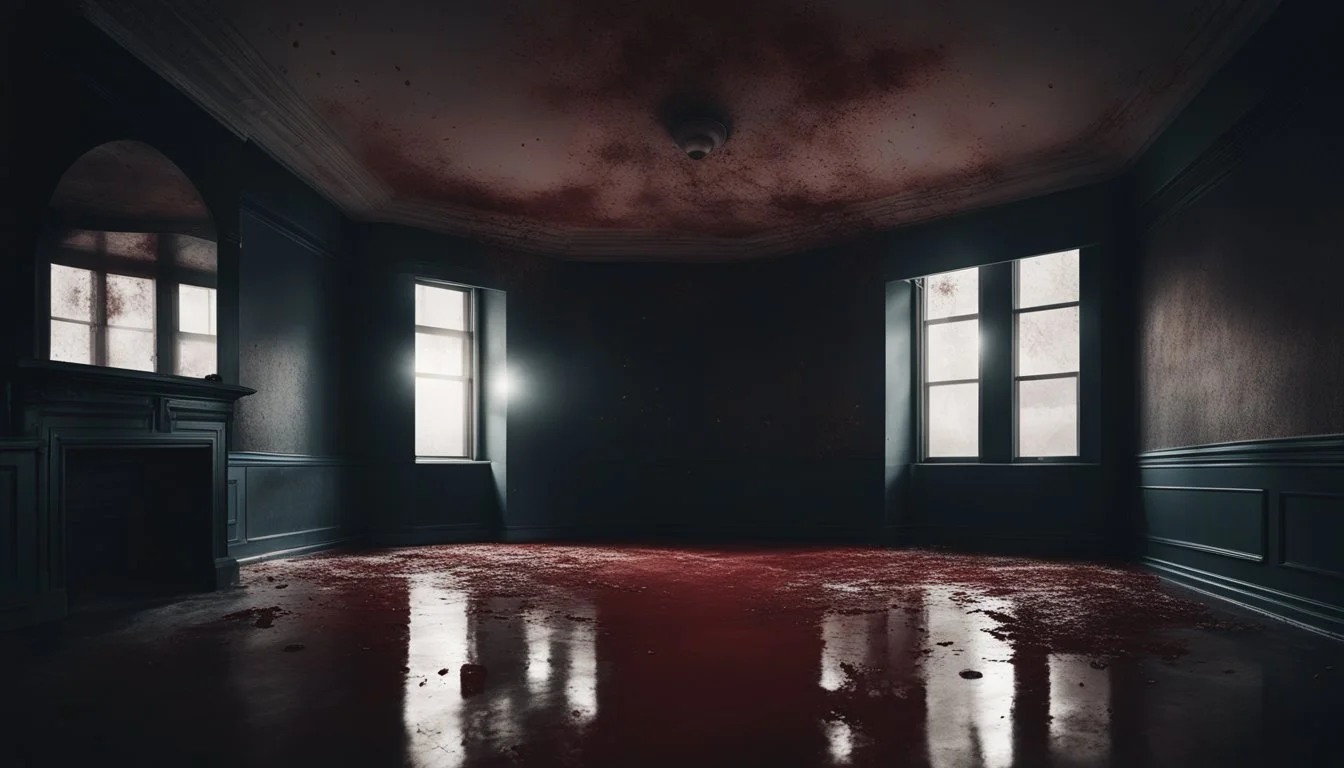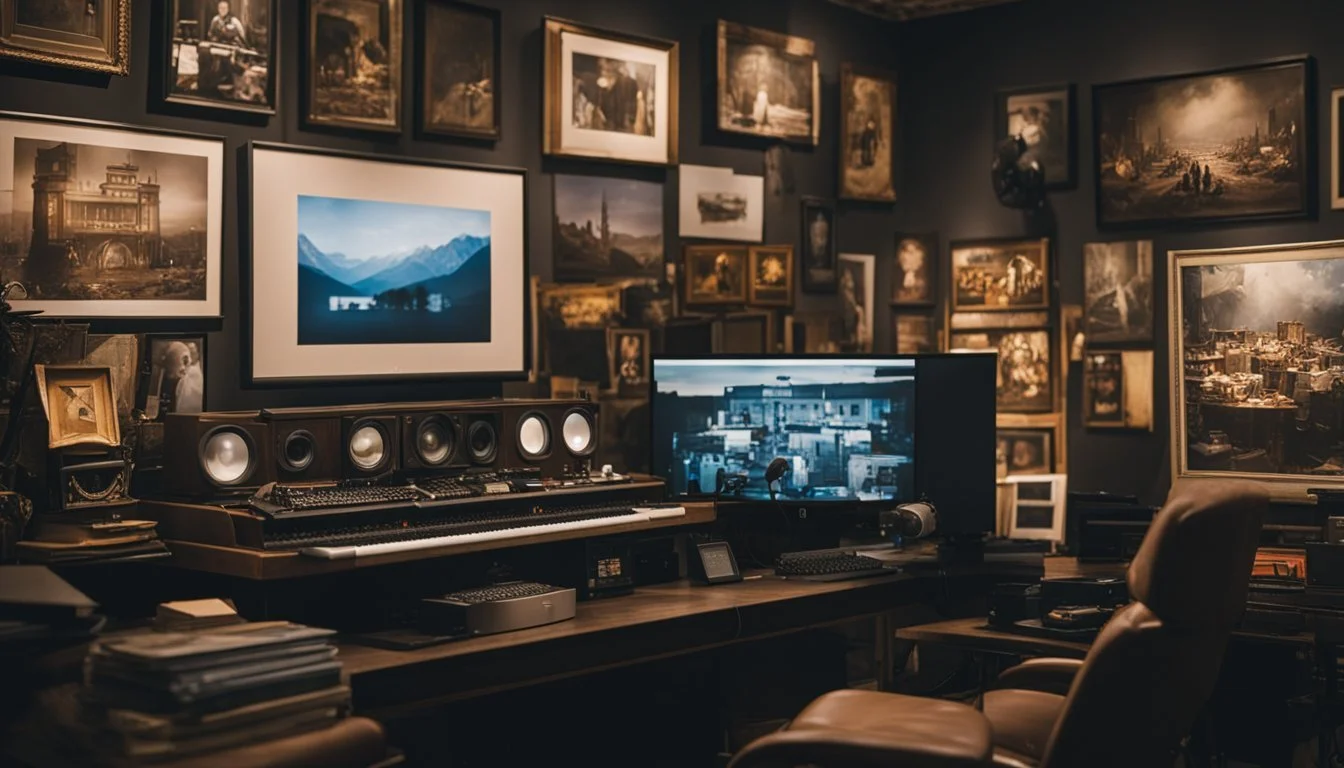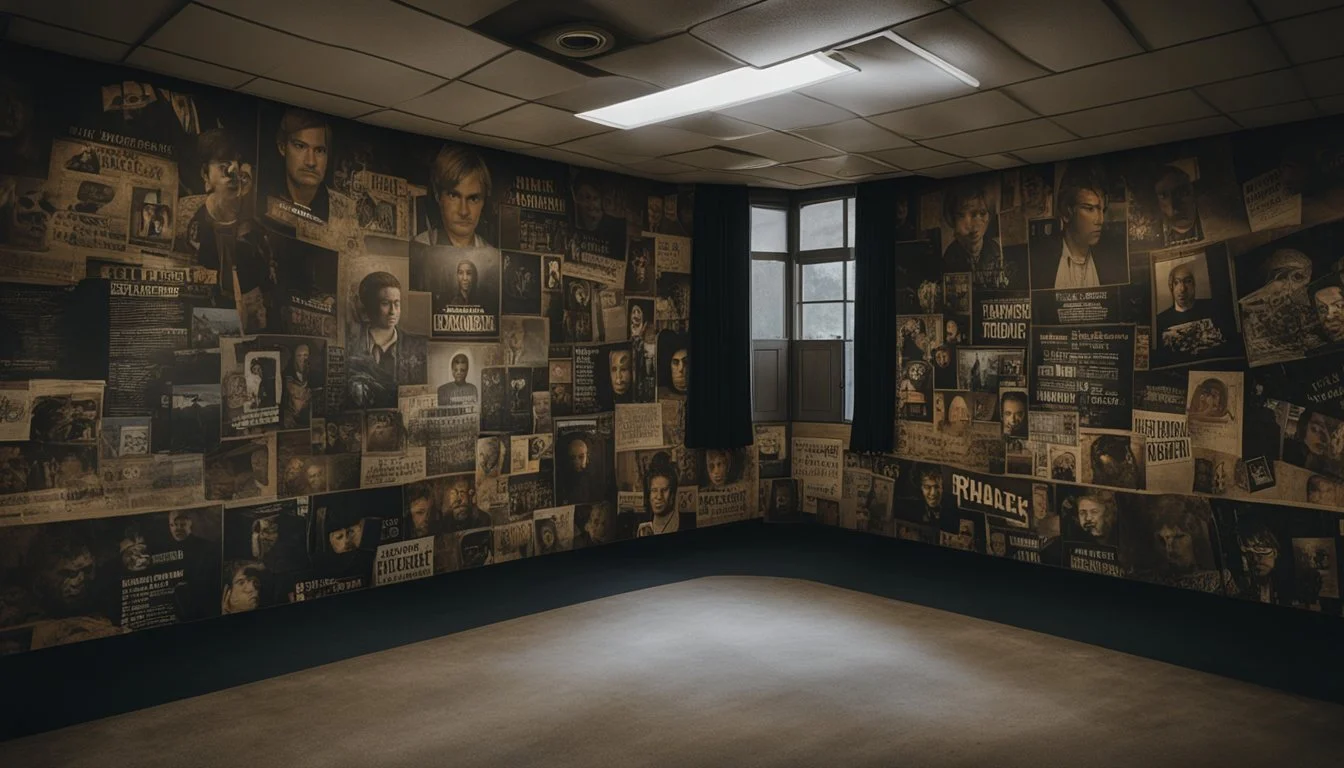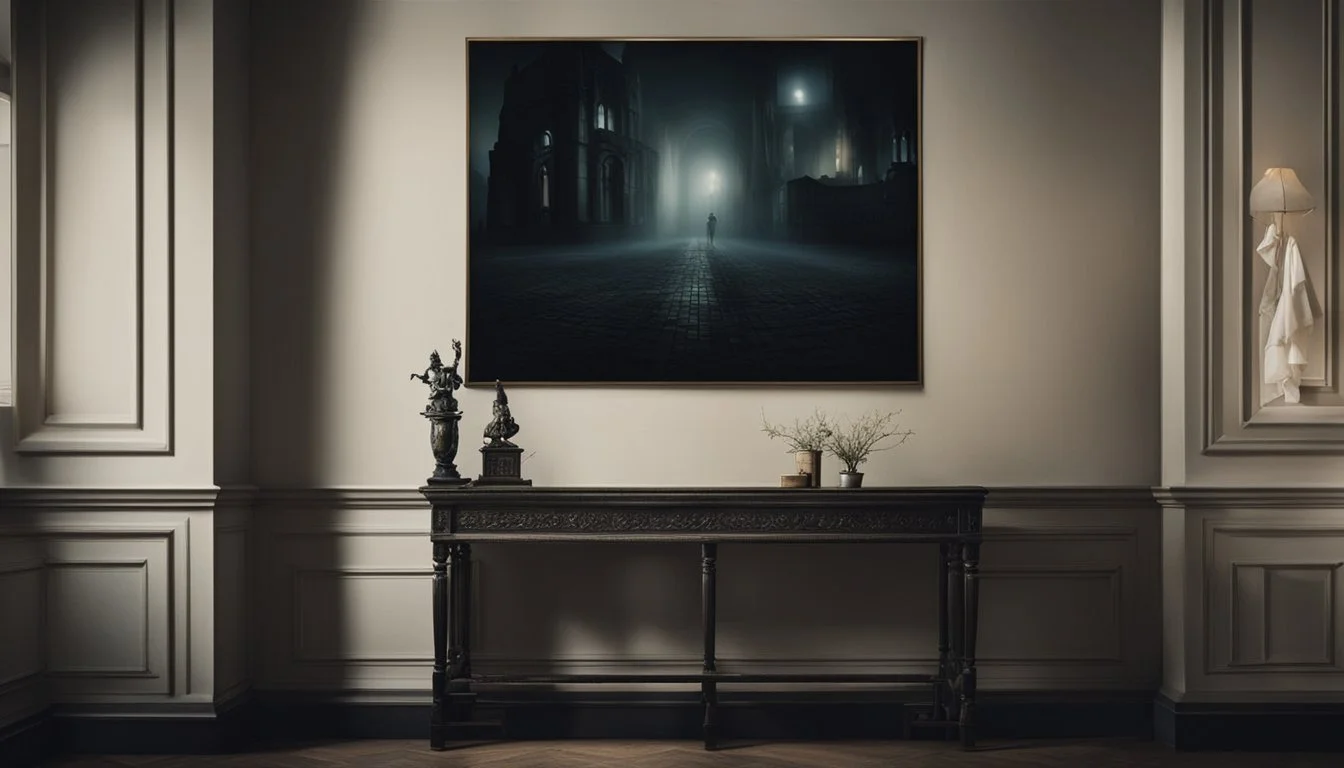10 True Crime Documentaries About Artists
Unveiling Creativity and Crime
True crime documentaries have captivated audiences for years, merging the thrill of detective work with the raw, unfiltered realities of criminal activity. These films delve into various schemes and deceptions, and when the world of crime intersects with the arts, the stories become uniquely compelling.
Why do true crime documentaries about artists fascinate viewers? Art and crime, when intertwined, reveal not just the criminal mind but also its creative potential. Exploring these narratives allows audiences to witness the intricate and often surprising links between creativity and criminality, providing a fresh perspective on both fields.
1) The Art of Killing: John Wayne Gacy
John Wayne Gacy was not traditionally an artist, but his heinous crimes displayed a macabre form of artistry. Known as the "Killer Clown," Gacy performed at children's parties dressed as "Pogo the Clown," a character he created.
Gacy was convicted of murdering 33 young men and boys in the 1970s. He hid many of their bodies in the crawl space of his home. Amid his crimes, Gacy also produced unsettling paintings, often depicting clowns, which he created while on death row.
This chilling docuseries dives deep into Gacy's life, blending archival interviews and footage with commentary to explore the duality of his persona. His art is both a chilling reminder of his crimes and an eerie peek into his disturbed mind.
For more information on this sobering film, see The Art of Killing: John Wayne Gacy (2021).
2) Creative Minds, Dark Crimes: The Life of Richard Ramirez
Richard Ramirez, known as the Night Stalker, was a notorious serial killer active in the mid-1980s. His crimes were marked by extreme violence and randomness, which instilled fear across Los Angeles. Ramirez's reign of terror lasted over a year, ending only when he was captured in 1985.
Ramirez's criminal activities included burglary, sexual assault, and murder. He targeted individuals of varying ages, using a wide range of weapons to perpetrate his crimes. His unpredictable patterns made it difficult for law enforcement to track him.
Several documentaries explore the psychology behind Ramirez's actions. These works shed light on his troubled upbringing and the factors that may have influenced his descent into criminality. These films feature interviews with investigators, survivors, and criminology experts, providing a comprehensive view of Ramirez’s life and crimes.
One notable documentary is "Night Stalker: The Hunt for a Serial Killer" (2021) on Netflix. This series presents a detailed account of Ramirez's murder spree and the subsequent investigation leading to his arrest. It delves into the meticulous and relentless efforts of law enforcement to bring him to justice.
For a deeper exploration of Richard Ramirez's life and crimes, "The Night Stalker" (2016) offers an eerie dramatization of his interactions. This film emphasizes his chilling persona and the psychological impact of his crimes.
For more details about "Night Stalker: The Hunt for a Serial Killer," visit Netflix.
For more information on "The Night Stalker," check out its IMDb page.
3) The Distorted Palette: Charles Manson's Artistic Journey
Charles Manson is often remembered for his horrific crimes, but his artistic aspirations are a lesser-known aspect of his life. Before he orchestrated the infamous murders, Manson was deeply embedded in the Los Angeles music scene.
In "Manson: Music from an Unsound Mind" (2019), filmmaker Tom O'Dell explores Manson's ambition to become a rock star. The documentary highlights Manson's connections with notable musicians, including Dennis Wilson of the Beach Boys. It provides an interesting insight into how Manson's musical dreams intertwined with his darker tendencies. More Information
"Charles Manson Superstar" (1989), directed by Nikolas Schreck, focuses on a one-on-one interview with Manson at San Quentin State Prison. This film reveals Manson's thoughts on a range of topics, including his music. Schreck, an electronic musician and occultist, captures Manson's intense persona in this distinctive documentary. More Information
"Manson's Highway to Hell" (2021), also directed by Tom O'Dell, delves into Manson's life as a musician. The documentary examines the grim path that ultimately led to his notoriety. It sheds light on how his quest for fame through music played a part in his tragic story. More Information
These documentaries present Manson in an unusual light, focusing on his musical career and providing a unique perspective on his life beyond the infamous crimes.
4) Portraits in Blood: The Case of Aileen Wuornos
Aileen Wuornos, often referred to as one of America's most infamous female serial killers, became a focus for various true crime documentaries due to her brutal crimes and tragic background.
"Serial Killers 8/25 - Aileen Wuornos" (2000) delves into the life of Wuornos, exploring her troubled upbringing, years as a sex worker, and the series of murders that led to her arrest. This documentary serves as an in-depth examination of her psychological state and motives. More about the film
"Life and Death of a Serial Killer" (2003), directed by Nick Broomfield, provides an even more personal look at Wuornos. Broomfield interviews Wuornos herself, capturing her final statements and desperate insights before her execution. More about the film
"First Blood" offers a gripping portrayal of how law enforcement tracked down Wuornos after her killing spree in Florida. The series opener details the investigation and the efforts to piece together who was responsible for the deaths of seven men. More about the film
5) The Painted Mask: Ted Bundy's Hidden Canvases
The Painted Mask: Ted Bundy's Hidden Canvases (2021) is a captivating documentary that explores an unexpected side of one of America's most infamous serial killers. Known for his gruesome crimes, Bundy also possessed a curious talent for art.
This film examines how Bundy's artwork, which he created while on death row, reveals facets of his complex personality.
The documentary delves into how these hidden canvases portray moods and themes that contrast starkly with his violent acts. Art historians and psychologists in the film analyze his use of color and form, providing insights into his mental state during his incarceration.
Interviews with prison guards and fellow inmates shed light on Bundy's time in prison and how his paintings became a medium for expression and perhaps, manipulation.
The Painted Mask offers a unique perspective on Bundy's life, making it an essential watch for those intrigued by the intersections of creativity and criminality.
For more information about The Painted Mask: Ted Bundy's Hidden Canvases, visit IMDb.
6) Van Gogh's Ear: The Madness Behind the Genius
Vincent van Gogh is often depicted as the quintessential "tortured artist," a sentiment partly rooted in his infamous act of self-mutilation. In 1888, following a heated argument with fellow artist Paul Gauguin, van Gogh took a razor to his ear and severed part of it.
His mental state has been a subject of much debate. Some argue he suffered from a combination of mental illnesses, which affected his ability to function and contributed to episodes of intense emotional distress.
Despite his struggles, van Gogh continued to create a prolific body of work, now celebrated worldwide. His unique style and emotional intensity reflect his inner turmoil, offering a glimpse into the mind of a genius affected by mental illness.
This documentary explores both his artistic achievements and the psychological battles he faced, contributing to a deeper understanding of the man behind the masterpieces.
More information on IMDb (2016)
7) Killer Brushstrokes: The Dark Art of Henry Lee Lucas
Henry Lee Lucas, a convicted murderer, gained notoriety for his false confessions to hundreds of murders. While remorselessly detailing these acts, he intertwined elements of art into his twisted narratives. His talent for manipulation rivaled his barbaric claims, making him a sinister figure in true crime history.
Netflix’s docuseries "The Confession Killer" (2019) delves into the complex web Lucas spun. It examines how he misled law enforcement officials with his detailed confessions. Some argue that his artistic manipulation of the truth was as chilling as any physical evidence.
Lucas’s storytelling blended fact and fiction, much like a dark artist painting a macabre picture. His ability to convincingly describe crimes he never committed left a lasting impact on families seeking justice.
His case raises troubling questions about the nature of confession and the eagerness of authorities to close unsolved cases. Despite his actual crimes, Lucas’s false confessions created widespread chaos, casting a long shadow over true crime investigations.
For further information on Henry Lee Lucas, viewers can watch "The Confession Killer" on Netflix or visit his Wikipedia page.
8) The Murals of Jeffrey Dahmer
Jeffrey Dahmer is infamously known as a serial killer whose crimes horrified the nation. While not directly about him creating art, documentaries exploring his life often touch on the chilling scenes police found in his apartment.
In 1991, Milwaukee police discovered human remains and disturbing photographs among Dahmer's belongings. His apartment was compared to a macabre gallery, showcasing his gruesome deeds.
The 1993 documentary Jeffrey Dahmer: Conversations With A Killer delves into the mind behind the crimes, offering a look into the environment he created. For more information, see Jeffrey Dahmer: Conversations With A Killer (1993).
The recent Netflix series, Monster: The Jeffrey Dahmer Story, reexamines his crimes and the settings they occurred in, bringing a renewed interest in his morbid "art." This series highlights the horrifying displays found within his living space. For further details, visit Monster: The Jeffrey Dahmer Story (2022).
Other documentaries, such as My Friend Dahmer (2017), provide context to his early life, offering glimpses into his deteriorating mental state leading to his apartment’s disturbing murals. More information can be found at My Friend Dahmer (2017).
9) Canvas of Crime: Ed Gein's Sick Masterpieces
Ed Gein, often known as the Butcher of Plainfield, left an indelible mark on the world of true crime through his gruesome and bizarre actions. His life and crimes have inspired numerous films and documentaries.
Gein was not just a murderer but also a graverobber. He created disturbing artifacts from the bodies he exhumed. This grotesque craft earned him a place in the annals of true crime history.
The documentary "Psycho: The Lost Tapes of Ed Gein" (2023) delves into these macabre creations, featuring audio recordings and police photos that shed light on Gein's twisted mind. It provides a chilling insight into how he transformed human remains into grim art pieces. More Information
Another notable film, "Ed Gein - The Mind of a Monster" (Year not specified), explores the psychological aspects behind his ghastly artifacts. This documentary examines what drove him to collect and repurpose human remains. It is an essential watch for those interested in true crime and forensic psychology. More Information
Through these documentaries, viewers are offered a glimpse into the deranged artistry of Ed Gein, a man whose legacy continues to haunt and fascinate.
10) Unearthed Art: Israel Keyes' Hidden Paintings
Israel Keyes is better known for his grim legacy as a serial killer. However, during his incarceration, he created unsettling artworks using his own blood as the medium. This macabre practice was revealed in a CBS "48 Hours" episode, where FBI agents displayed his blood-painted skull drawings thought to symbolize his 11 victims.
Keyes had an interest in true crime, studying other serial killers and keeping related literature. His fascination with the grim and the grotesque extended into his artwork, where the themes of death and darkness prevailed. His prison cell's walls bore these eerie illustrations, offering a disturbing glimpse into his mind.
Grim Philly historians and a criminal profiler analyzed these artworks. They found cryptic words and patterns that shed light on Keyes' psyche. The use of blood added a chilling authenticity to his sinister creations, making these pieces both rare and haunting.
While these paintings do not celebrate artistic triumph, they provide crucial insight into a disturbed mind. Keyes’ art serves as a grim reminder of his heinous actions and complex psychological profile.
For those interested in true crime and its intersection with art, this documentary segment offers a unique, if unsettling, look at the mind of a killer through his own twisted creations.
Watch Unearthed Art on IMDB (2022)
Exploring the Intersection of True Crime and Art
True crime and art intersect in fascinating ways, revealing both the creative and darker sides of human nature.
Understanding the Fascination
The fascination with true crime documentaries, especially those involving artists or art crimes, stems from a mix of curiosity and the allure of the forbidden. These stories often involve high-stakes thefts, intricate forgeries, and the dramatic lives of the artists themselves.
Audiences are captivated by the duality of art as both a creation of beauty and an object of criminal desire. The complexities of these crimes provide an engaging mix of mystery, investigation, and the pursuit of justice. Furthermore, the personalities of the artists and criminals involved add an extra layer of intrigue.
Historical Context
Throughout history, art crimes have been notorious for their boldness and impact. Notable cases, such as the theft of the Mona Lisa in 1911 or the Isabella Stewart Gardner Museum heist in 1990, have become legendary. These events not only highlight the value of art but also the lengths to which individuals will go to possess it.
Art forgeries, too, have a long history, with figures like Han van Meegeren producing convincing fake Vermeers that fooled experts. These stories showcase the intersection of skill, deception, and the quest for recognition. Thus, understanding this historical context helps in appreciating the depth and lure of true crime in the art world.
Psychological Profiles of Artistic Criminals
Criminal behavior in art crimes often reveals complex psychological and emotional dimensions. These criminals exhibit unique traits and motivations, providing critical insights into their behaviors.
Common Traits Among Artists and Criminals
Artistic criminals frequently show a distinct blend of creativity, meticulous planning, and an understanding of emotional manipulation. These individuals often possess high levels of intelligence and an acute sense of aesthetics. This combination enables them to craft elaborate schemes, whether through art forgery or theft.
A notable trait is their ability to exploit trust and vulnerability. These criminals often manipulate emotional and psychological factors to gain access to restricted art spaces or deceive art communities. Narcissism and a disregard for societal norms are common, allowing them to rationalize their deceptive actions.
Case Studies and Psychological Insights
An example is the case of renowned forger Han van Meegeren, who deceived the art world with fake Vermeer paintings. Through his deep understanding of art history and painting techniques, van Meegeren effectively challenged experts, highlighting the interplay between expertise and deceit. This case underscores the importance of technical skill in art forgeries.
Another example is the Isabella Stewart Gardner Museum heist. The thieves showed extraordinary knowledge of the museum layout and security systems, indicating extensive preparation and strategic thinking. Psychological insights from this case reveal a blend of boldness and precision, aiming to exploit weaknesses in security protocols.
The Impact of Crime on Art
The intersection of crime and art has far-reaching implications, shaping artistic expressions and provoking varied responses from artists and institutions alike.
Artistic Expressions Influenced by Crime
Criminal acts, such as art theft and vandalism, often leave lasting impressions on the art world. Artists frequently channel their reactions to these events into their work. For example, crime scenes or stolen art replicas become motifs in new creations.
This can be seen in artists like Guy Ribes, who forged works of famous painters. The drama around art crimes sometimes inspires artists to produce documentaries, offering visual commentaries on the impacts and intricacies of these crimes.
Overall, art influenced by crime provides a unique lens through which society can examine and grapple with these incidents.
Response from the Art Community
The response from the art community to crimes involving artwork is multifaceted. Museums often ramp up security measures, employing advanced technology and thorough staff training. Insurance companies may adjust policies, reflecting the increased risk of theft or vandalism.
Exhibition strategies also shift, with some institutions focusing more on the historical context of stolen or vandalized pieces. Documentaries serve as platforms not only to recount the crimes but also to critique the adequacy of these responses.
The art world’s efforts to tackle crime are crucial in preserving cultural heritage and ensuring continued public access to seminal artworks.


